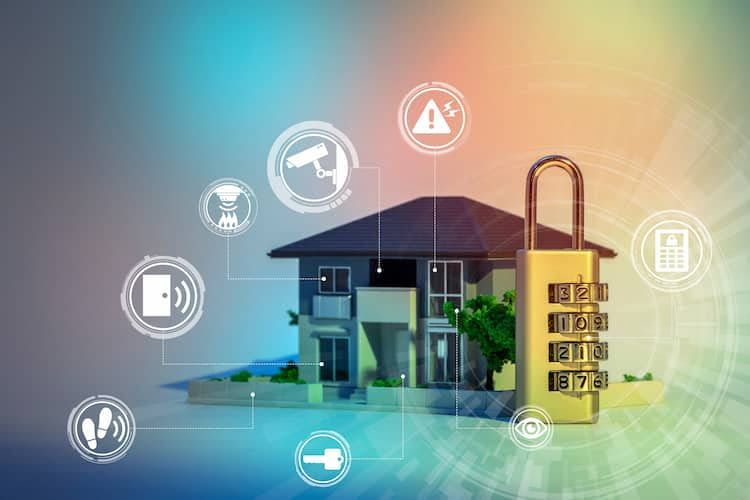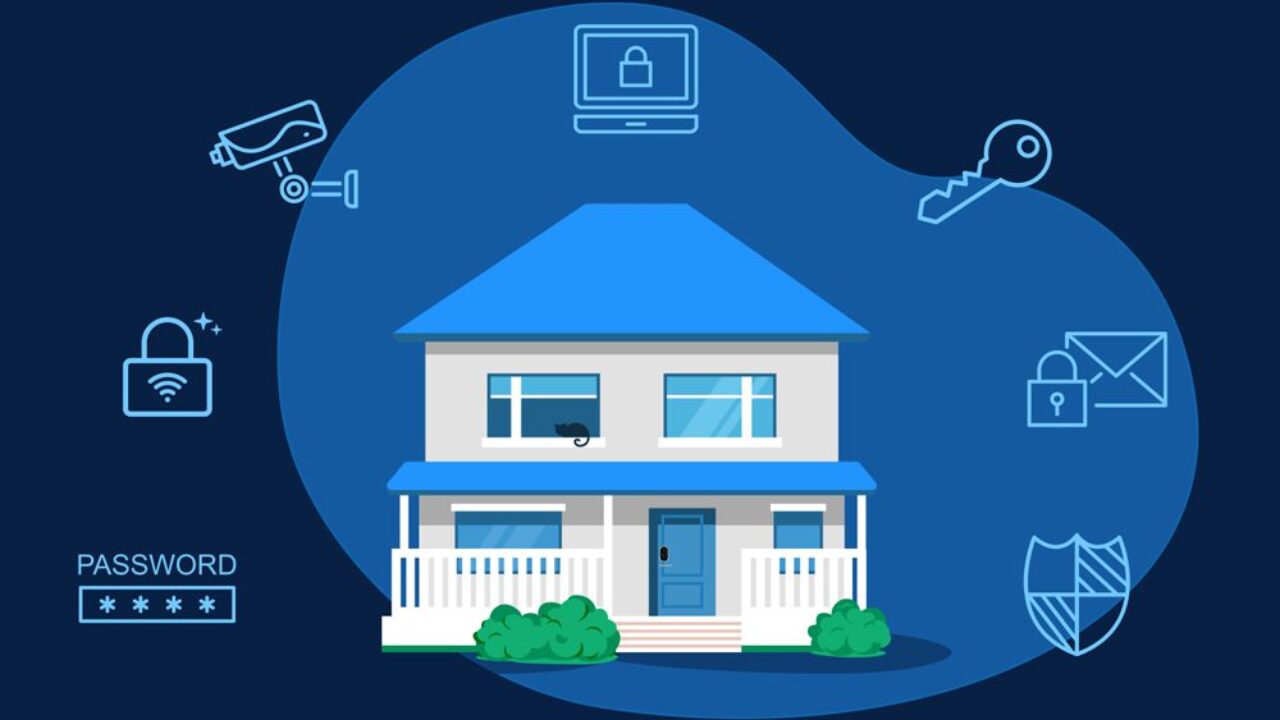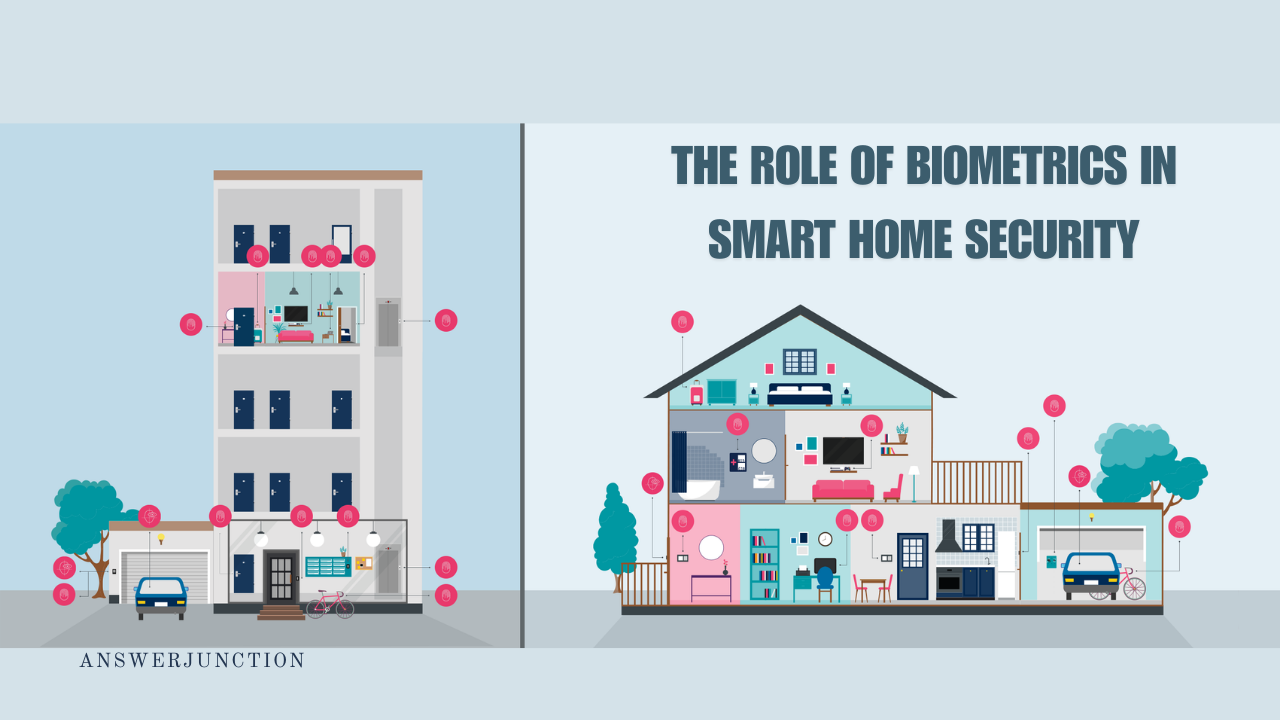Smart home security has evolved beyond traditional locks and alarm systems, integrating cutting-edge technology to protect homeowners and their families. Among the most revolutionary advancements in this field is the use of biometrics, which has changed how people secure their homes and access their property. Biometric technology, which uses unique physical characteristics for identification, offers an effective and reliable layer of protection for smart homes. This article explores the role of biometrics in smart home security, examining how it works, the various types of biometric systems used, its benefits and limitations, and the future of this technology in home security systems.
What is Biometrics in Smart Home Security?

Biometrics refers to the use of unique human characteristics—such as fingerprints, facial patterns, voice, and iris patterns—for identification and access control. Unlike traditional methods like passwords or keys, biometrics leverages identifiers that are unique to each individual, making it harder for unauthorized people to gain access. In the context of smart home security, biometric systems are used to control access to doors, activate security systems, and verify the identity of people entering the home. With biometric technology, homeowners have an additional layer of security that can prevent potential intrusions, reduce the chances of identity theft, and ensure only authorized individuals can enter the property.
Types of Biometric Technologies in Smart Home Security
Biometric systems come in various forms, each with its advantages and applications in smart home security. Some of the most popular biometric technologies used in smart homes include fingerprint recognition, facial recognition, iris scanning, and voice recognition.
1. Fingerprint Recognition
Fingerprint recognition is one of the most common biometric methods used in smart homes due to its simplicity, accuracy, and affordability. By using a fingerprint scanner, smart home systems can quickly and accurately verify the identity of a person. Fingerprint recognition is popular because of its reliability; each individual has a unique fingerprint pattern, making it extremely difficult for unauthorized users to replicate. Many smart locks and security devices now come equipped with fingerprint sensors, allowing homeowners to unlock doors, disable alarms, or access secure areas with a touch.
2. Facial Recognition
Facial recognition technology uses cameras and sophisticated algorithms to map and identify unique facial features, allowing smart home systems to recognize individuals accurately. The system analyzes aspects like the distance between the eyes, the shape of the nose, and the contours of the face to create a unique digital signature for each person. Facial recognition has become increasingly popular in recent years and is being integrated into a variety of smart home security devices. This technology is highly effective because it is non-intrusive and can identify individuals even in low-light conditions. It also adds a layer of convenience since homeowners don’t need to carry keys or remember codes to gain entry.
3. Iris Scanning
Iris scanning is a biometric method that analyzes the unique patterns in a person’s iris, the colored part of the eye. The iris has complex and unique patterns that remain stable over time, making it a reliable means of identification. While iris scanning is more expensive and less common in residential settings, it is gaining traction in high-security environments and luxury smart homes. This technology is highly accurate and nearly impossible to replicate, providing an extremely secure option for homeowners who prioritize security.
4. Voice Recognition
Voice recognition technology identifies individuals based on their unique voice patterns, which are influenced by factors such as vocal cord vibrations and the shape of the vocal tract. Voice recognition systems can be integrated into smart speakers and other home devices, allowing homeowners to control access to their home with voice commands. This technology is often used in conjunction with other biometric methods to enhance security. However, it may be less reliable in noisy environments or for people with vocal changes due to illness or other factors.
How Biometrics Enhances Security in Smart Homes
Biometric technology enhances smart home security by providing a secure, convenient, and personalized method of access control. Unlike traditional locks and security codes, biometric systems are difficult to bypass because they rely on unique physiological characteristics. Here’s how biometrics contribute to improved smart home security:
- Enhanced Security: Biometric systems are more secure than traditional keys and PIN codes, which can be stolen, copied, or hacked. Since biometric traits like fingerprints and facial features are unique to each individual, it is much harder for unauthorized people to access the property.
- Convenience and Speed: Biometric authentication is quick and convenient, allowing homeowners to access their property without keys, passwords, or codes. For example, a fingerprint scan or facial recognition can grant instant access, which is particularly useful for families with children or elderly members who may struggle with traditional locks.
- Reduced Risk of Identity Theft: Traditional security systems are vulnerable to hacking and theft of information, such as passcodes and access codes. Biometrics, however, are much harder to replicate or forge. By using physical traits that are unique to each individual, biometric systems significantly reduce the risk of identity theft.
- Integration with Smart Devices: Biometric systems can be easily integrated with other smart home devices. For example, facial recognition cameras can work in tandem with smart lighting systems, automatically turning on lights when an authorized person is detected. This seamless integration creates a more cohesive and responsive security system, enhancing the overall smart home experience.
Benefits of Using Biometrics in Smart Home Security

Biometrics in smart home security offers several key benefits, making it an attractive option for modern homeowners. Some of these benefits include:
- High Accuracy: Biometric systems offer high accuracy in identifying individuals, reducing the likelihood of unauthorized access.
- Customizable Access: Homeowners can configure biometric systems to grant different levels of access to family members, friends, or service personnel.
- Minimal Maintenance: Most biometric systems are low-maintenance and require minimal upkeep, making them a cost-effective option in the long run.
- Real-Time Monitoring: Biometric systems can be integrated with mobile applications, allowing homeowners to monitor who enters and exits the property in real-time.
Challenges and Limitations of Biometrics in Smart Home Security
While biometrics offer several advantages, there are also challenges and limitations to consider. These include:
- Privacy Concerns: Biometric data is sensitive, and if it falls into the wrong hands, it can be misused. There is also the potential for hacking, raising concerns about data security and privacy.
- High Initial Cost: Biometric systems can be expensive to install, particularly advanced technologies like iris scanning and facial recognition.
- Environmental Factors: Biometric systems can be affected by environmental factors such as lighting, weather, or background noise, which can impact their reliability.
The Future of Biometrics in Smart Home Security
The future of biometrics in smart home security looks promising as technology continues to evolve. Advancements in artificial intelligence (AI) and machine learning are expected to improve the accuracy and efficiency of biometric systems, making them more reliable and accessible. AI can enhance facial and voice recognition systems by allowing them to learn and adapt to changes, such as facial hair or aging. In addition, the integration of biometrics with the Internet of Things (IoT) will enable seamless communication between devices, creating a more connected and secure home environment.
Moreover, as the demand for smart home security increases, it is likely that biometric technology will become more affordable, making it accessible to a broader range of consumers. Developers are also working on multi-factor authentication, combining biometrics with other security methods like passwords or security tokens to further enhance security. The growing popularity of mobile apps and wearable devices will also contribute to the expansion of biometrics in smart homes, allowing homeowners to manage and monitor their security systems from anywhere.
Biometric technology has transformed the landscape of smart home security, providing homeowners with a secure and convenient way to protect their property. By using unique physiological characteristics for access control, biometrics reduce the risk of unauthorized access, enhance convenience, and offer a more personalized security experience. Despite challenges related to cost and privacy concerns, biometrics are likely to play a significant role in the future of smart home security. As technology advances and becomes more affordable, biometric security systems will continue to evolve, offering new possibilities for secure, smart home living.




